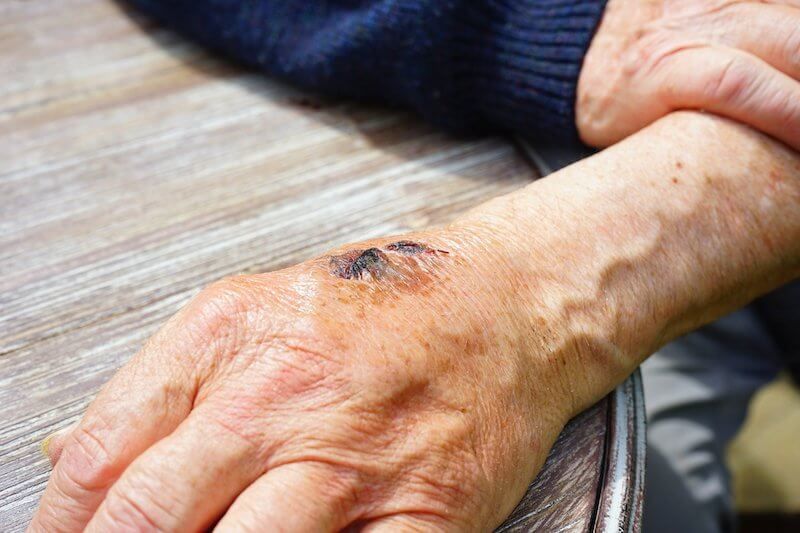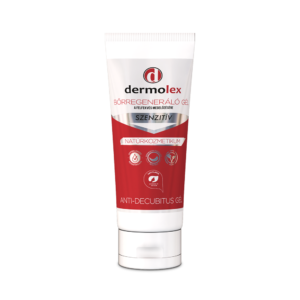There are three types of healing intentions: primary, secondary, and tertiary healing. In our article, we will focus on secondary intention.
Wound care is one of the most common concerns faced by nurses and care givers today. Wound healing is a process and the length of time it takes is dependant upon multiple factors including the size and depth of the wound, and whether the wound is sutured or left open. It is of utmost importance that wounds heal correctly to avoid the risk of infection.
This article will examine the phases and types of wound healing with an emphasis on open wounds as the process is more complex.
Phases of Wound Healing
Hemostasis
The first phase occurs within minutes of sustaining a wound. Regardless of whether the wound is caused by a surgical procedure or accidental breakage of the skin, when bleeding occurs the body responds by attempting to stop blood loss at the point of injury. The blood will clot, and as it dries it will form a scab.
Inflammation
The human body is designed to protect itself against infection. Within 1-2 days the body’s immune system will go on the defensive and „cleanse” the wound. The swelling and clear secretions associated with this phase are an indicator that the body is expelling any debris that may have been in the wound and destroying bacteria.
Proliferation
Within approximately five days tissue regrowth begins. During this phase, damaged skin is replaced with new, healthy tissue, called granulation tissue. As it forms, it pulls inward making the wound smaller. Finally, new epithelial tissue (skin) covers the wound. This phase can last a matter of days or up to a month depending upon the severity of the wound.
Remodelling
As the scab falls off and a scar is formed, the new skin is weaker and less flexible. It may appear red, shiny, and can be itchy. During the remodelling phase, the new skin slowly regains its flexibilty and the scar will fade. As with the proliferation phase, the duration of this phase is dependant upon the severity of the wound and remodelling can take up to two years.
Types of Wound Healing
The three types of wound healing have significantly different impacts on the duration of the wound healing phases. Wounds healing by primary intention are wounds that have been closed using stiches, skin glue, staples, etc. Most surgical incisions are an example of wounds that are healed by primary intention healing.
Secondary intention healing is when a wound is left open. No sutures or other materials are used to close the wound. Dressings are applied instead in order to protect the wound from contamination. Tertiary intention healing occurs when closure of the wound needs to be delayed. In instances of poor circulation or infection, when a wound may need to remain open initially for drainage, tertiary healing would be applied.
Healing by secondary intention
Of these three types of wound management, secondary intention is the most complicated. When too much tissue has been lost and the wound edges cannot be joined, the healing must occur from the bottom of the wound upwards. Two examples of common wounds treated with secondary intention are pressure sores and diabetic foot. Secondary intention requires a longer healing time and daily attention to treatment is necessarynecesssary.
Dressings need to be applied in order to protect and keep the wound clean. These must be removed before bathing each day. The wound itself must be cleaned daily using boiled water that has cooled using gauze or a similar material. After cleaning, the wound should be patted gently until dry. Afterwards, a thin layer of antiseptic ointmentoinment should be applied before covering the wound with a new dressing.
Wound care and wound management
There are numerous factors that affect the healing time of cutaneous wounds. Local factors include the size, type, and location of the wound. Because wounds requiring secondary intention healing are open, they are more susceptible to contamination which increases the risk of developing an infection.
Although infections often develop within the first three to six days, they might not become apparent until thirty days. Systemic factors also play a role in the duration of wound healing, such as co-morbidities. Increased age, cardiovascularcardio vascular disease, diabetes mellitus, and obesity can lead to a longer healing process. These risk factors highlight the importance of proper wound care throughout all stages of the healing process.


